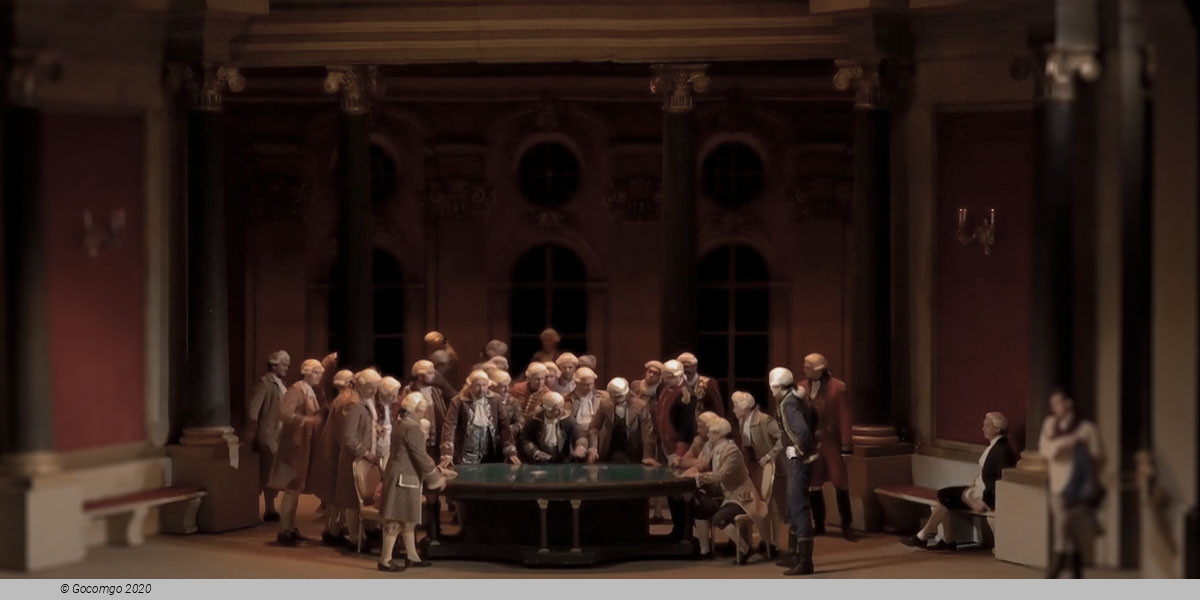Yekaterinburg Opera and Ballet Theater (Yekaterinburg, Russia)
Yekaterinburg Opera and Ballet Theater

Yekaterinburg State Academic Opera and Ballet Theater is a stationary opera and ballet theater in Yekaterinburg, founded in 1912. The building was designed by engineer V.N.Semenov. In the theater building on November 8 (October 26), 1917, at an emergency meeting of the Yekaterinburg Council of Workers 'and Soldiers' Deputies, it was announced that Soviet power had been established in the city and in the Uralsю
History
In the 1870s, representatives of the local intelligentsia organized the Yekaterinburg Musical Circle (official status since 1881). The opera troupe first appeared in Yekaterinburg in the 1879-1880 season: it was brought by the entrepreneur Pyotr Medvedev. In the future, opera enterprises performed here more than once, and since 1907 they have become annual.
In 1902, the Yekaterinburg Duma announced an all-Russian competition for the best design of a theater building specially designed for opera performances.
The winner was Vladimir Semyonov, a civil engineer from Pyatigorsk, who presented a project called "Svetlana" (the then young author was helped by the architect Konstantin Babykin). The foundation was laid in 1910 on Drovyanoy Square (now the Paris Commune) on the site of a wooden circus that had existed here since 1896. In 1912, the construction of the "New City Theater" with a horseshoe-shaped auditorium for 1,200 seats was completed. The construction of a building with comfortable interiors, in particular, intended for artists, presupposed the full existence of a stationary theater group.
The front facade of the theater faces Main Avenue. The central reality, accentuating the entrance, is decorated with elegant balconies with balustrades, stucco decorations, and an attic, completed in the center by a sculptural group of three muses. Facade planes are decorated with numerous stucco details: rosettes, floral ornaments, sculptural bas-reliefs. The crowning part of the building is decorated with balustrades with graceful turrets.
The theater opened on September 29 (October 12) with Mikhail Glinka's opera A Life for the Tsar. The first chief conductor of the theater was Silvio Barbini. The rich traditions of private enterprises, touring troupes, and the long-term activity of the Yekaterinburg musical circle helped the theater quickly gain confidence and its own name. In 1914, FF Troyanovsky's staging of The Magic Flute by R. Drigo began the chronicle of the Yekaterinburg Ballet, in the troupe of which at first 8 people danced (Lazareva, Garetta, MA Stekl, N. Srednitskaya, RI Balanotti).
Soviet time
After the revolution, the theater was closed and reopened in 1919. In 1922 the ballet troupe was created anew, its first performance was “Coppelia” by L. Delibes, staged by P.K. Yorkin.
In 1925-1926, the main director of the theater was Alexander Ulukhanov - he staged the operas "The Tale of Tsar Saltan" and "Werther". Among the conductors was Lev Steinberg (1926-1928). Since the mid-1920s, works by Soviet authors began to appear in the repertoire, the theater was called “the laboratory of the Soviet opera”, and often the billboard was stamped: “the right of the first production belongs to the theater”. The theater also turned to the works of the Ural composers: V. Trambitsky, G. Beloglazov, K. Katsman, K. Muller, A. Friedlander. The directors of the performances were: I. D. Belsky, K. F. Boyarsky, Yu. N. Grigorovich, P. K. Yorkin, M. F. Moiseev, E. Ya. Changa, A. V. Chichinadze, L. V. Jacobson.
In 1924 the theater was renamed, becoming the State Opera House named after A. V. Lunacharsky, and since 1931 - the Sverdlovsk Opera and Ballet Theater named after A. V. Lunacharsky.
In 1936, the square in front of the theater was landscaped according to the project of the architect Sigismund Dombrowski.
In 1981-1982 the building was reconstructed. In 1982-1985, under the leadership of the architect and artist Georgy Shishkin, work was carried out to create a theater museum. He completed two wall paintings and a gallery of portraits of the theater soloists (he is also the author of the lanterns in front of the theater building and in the Historical Square).
Modern time
In the 1990s, after the collapse of the USSR, the theater experienced a crisis, lacking funding. Through the efforts of its then director V.S.Vyatkin, a board of trustees was created, sponsorship from the largest Yekaterinburg associations and banks was attracted.
Creative contacts with foreign theater workers have noticeably increased (Tosca 1992, Troubadour 1995, both directed by M.-F. Sichiliani). To organize touring activities in the 2000s, an international department was created in the theater. The troupe has tours of more than a hundred cities in Russia and the former USSR, participation in theater festivals in the country and abroad. The theater has developed cultural ties and creative contacts with Italy, Germany, USA, England, Korea. Eminent guest performers perform on its stage, music festivals are held.


